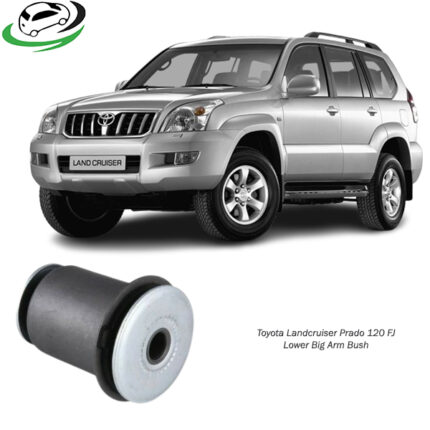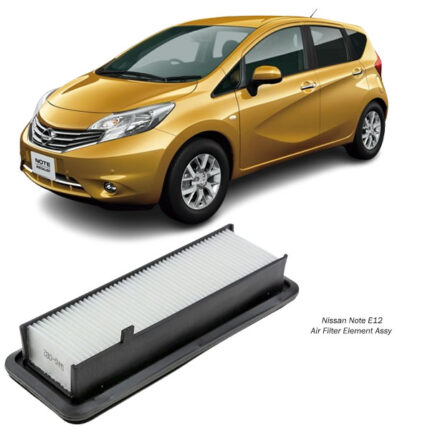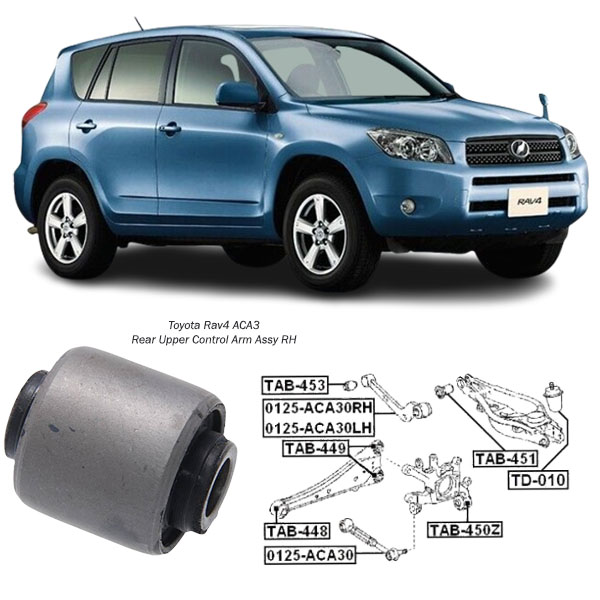-10%
Get Toyota RAV4 ACA3 Rear Upper Control Arm Assy RH 48770-42040 in Kenya
The Rear Upper Control Arm Assembly (RH) is a crucial part of a vehicle’s rear suspension system, playing an essential role in ensuring stability, wheel alignment, and smooth handling. It is located on the right-hand (RH) side of the vehicle and is responsible for connecting the rear wheel hub to the chassis, allowing controlled movement while keeping the suspension geometry intact.
A worn-out or damaged rear upper control arm can result in alignment issues, poor handling, excessive tire wear, and an uncomfortable ride. This guide provides an in-depth understanding of the function, components, working mechanism, failure symptoms, replacement process, and maintenance tips for the Rear Upper Control Arm Assembly (RH).
1️⃣ What is a Rear Upper Control Arm Assembly (RH)?
The rear upper control arm is a suspension link that helps maintain proper wheel alignment and stability. It is one of the multiple control arms in a multi-link suspension system or part of a double-wishbone suspension setup.
✔️ Controls the movement of the rear wheels
✔️ Prevents excessive camber changes (tilting of the wheel inwards or outwards)
✔️ Ensures stability and ride comfort
✔️ Works with shocks and springs to absorb road impacts
In a multi-link system, the rear upper control arm (RH) works with lower control arms, trailing arms, and stabilizers to provide superior handling and ride comfort.
2️⃣ Components of a Rear Upper Control Arm Assembly
A rear upper control arm assembly consists of multiple key components that work together to enhance suspension performance:
Main Components:
🔹 Control Arm Linkage – A strong, lightweight metal arm (steel or aluminum) that connects the chassis to the rear wheel assembly.
🔹 Ball Joints – Allow pivoting motion, enabling wheel movement in various directions.
🔹 Bushings – Made of rubber or polyurethane, they absorb shocks and minimize vibrations.
🔹 Mounting Brackets – Secure the control arm to the chassis and suspension components.
🔹 Bolts and Fasteners – Hold the control arm firmly in place.
These components work together to ensure smooth wheel movement, proper alignment, and enhanced vehicle stability.
3️⃣ How Does a Rear Upper Control Arm Work?
The rear upper control arm assembly functions as a pivot point for the rear wheels, allowing them to move up and down while maintaining proper geometry. Here’s how it works:
1️⃣ Suspension Movement – When the car moves over bumps, the suspension compresses and extends.
2️⃣ Pivoting Motion – The upper control arm pivots at its mounting points, allowing the wheels to move while keeping them aligned properly.
3️⃣ Camber and Toe Control – The arm helps maintain the correct wheel camber and toe angles, preventing excessive tire wear.
4️⃣ Shock Absorption – The bushings and joints absorb vibrations, preventing unnecessary stress on other suspension parts.
5️⃣ Handling & Stability – By keeping the wheels aligned and stable, the control arm improves vehicle handling, cornering, and traction.
In sports cars and high-performance vehicles, the rear upper control arms are adjustable, allowing for fine-tuning of suspension settings for better track performance.
4️⃣ Signs of a Worn or Failing Rear Upper Control Arm 🚨
A damaged or failing rear upper control arm can cause serious suspension and handling problems. Look out for these warning signs:
❌ Uneven or Rapid Tire Wear – Worn control arms cause misalignment, leading to irregular tire tread wear.
❌ Clunking or Knocking Noises – Loose control arm bushings or joints can produce clunking sounds, especially over bumps.
❌ Poor Handling & Steering Instability – The vehicle may feel unstable or drift during turns.
❌ Excessive Vehicle Sway – A failing control arm can cause the rear end of the car to sway excessively, making driving unsafe.
❌ Steering Wheel Vibrations – Loose or worn bushings fail to absorb road impacts, causing vibrations in the steering wheel.
❌ Car Pulling to One Side – Misalignment caused by a damaged control arm can make the vehicle drift to the right or left.
Ignoring these signs can lead to severe handling problems and safety risks. It’s best to inspect and replace the control arm assembly as soon as symptoms appear.
5️⃣ Causes of Rear Upper Control Arm Failure
There are several reasons why rear upper control arms wear out over time:
🔹 Normal Wear & Tear – Continuous movement and suspension stress cause gradual deterioration.
🔹 Rough Roads & Potholes – Driving on uneven roads increases stress on control arm components.
🔹 Corrosion & Rust – Moisture exposure can lead to metal weakening and rust formation.
🔹 Bushing Degradation – Rubber bushings wear out over time, leading to excessive play.
🔹 Accidents or Hard Impacts – Collisions or hitting curbs at high speeds can bend or break the control arm.
Regular maintenance and inspections can help prevent early failure and costly repairs.
6️⃣ How to Replace a Rear Upper Control Arm Assembly (RH)? 🛠️
Replacing the rear upper control arm is a moderate to advanced mechanical task. Follow these steps for proper installation:
Tools Required 🛠️
✔️ Jack & Jack Stands
✔️ Lug Wrench
✔️ Socket & Wrench Set
✔️ Ball Joint Separator
✔️ Torque Wrench
✔️ Grease & Lubricants
Step-by-Step Replacement Guide:
1️⃣ Lift the Vehicle – Secure the car on jack stands and remove the rear wheel.
2️⃣ Locate the Rear Upper Control Arm – Identify its mounting points on the chassis and wheel hub.
3️⃣ Remove the Bolts & Fasteners – Use a socket wrench to loosen and remove bolts securing the control arm.
4️⃣ Detach the Ball Joint – Use a ball joint separator to disconnect the control arm from the suspension.
5️⃣ Remove the Old Control Arm – Carefully pull out the worn control arm assembly.
6️⃣ Install the New Control Arm – Align the new RH control arm and secure it with bolts.
7️⃣ Reattach the Ball Joint – Ensure it fits snugly and tighten all fasteners.
8️⃣ Torque the Bolts to Manufacturer Specs – Use a torque wrench for precise tightening.
9️⃣ Reinstall the Wheel & Lower the Car – Double-check all connections before lowering the vehicle.
🔟 Perform a Wheel Alignment – A professional alignment is necessary after replacing suspension parts.
Proper installation ensures optimal performance, stability, and longevity of the suspension system.
7️⃣ Maintenance Tips for Rear Upper Control Arms 🔧
To extend the lifespan of your rear upper control arm, follow these maintenance tips:
✔️ Regular Inspections – Check for loose, worn, or damaged components every 15,000 – 20,000 miles.
✔️ Lubricate Bushings & Ball Joints – Prevents premature wear and squeaking noises.
✔️ Avoid Rough Roads – Reduces impact damage and prolongs lifespan.
✔️ Check Wheel Alignment Regularly – Misalignment puts extra stress on suspension components.
✔️ Replace in Pairs – If one side is worn, replace both RH and LH control arms for balanced performance.
Taking care of your rear suspension ensures better handling, even tire wear, and safer driving.
Conclusion 🎯
The Rear Upper Control Arm Assembly (RH) is a vital suspension component that maintains wheel alignment, stability, and handling. Worn or damaged control arms can lead to serious driving issues, so timely replacement is essential.
Regular inspection and maintenance help keep your vehicle stable, smooth, and responsive! 🚗🔧
Follow us on Facebook for more parts.



